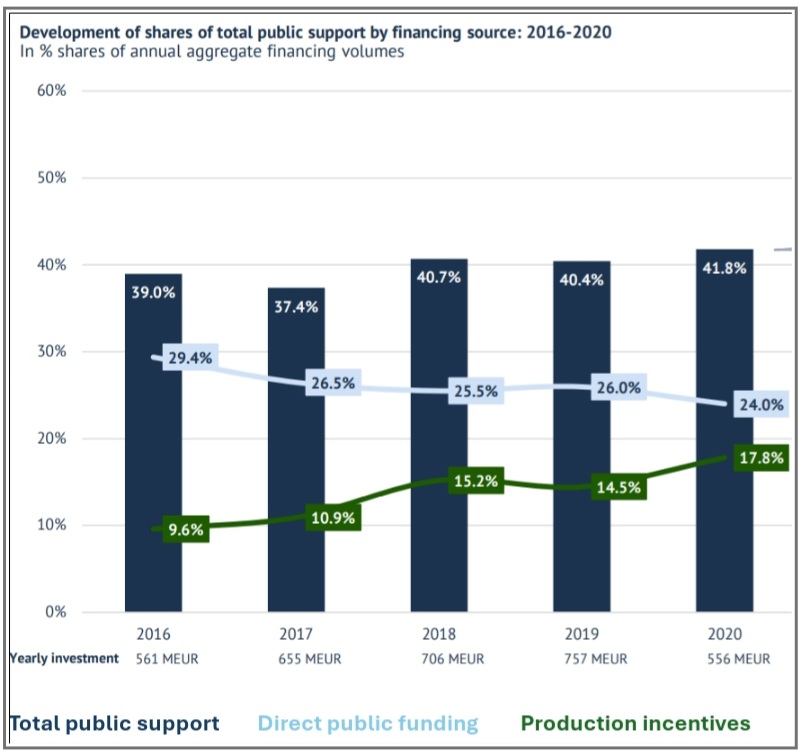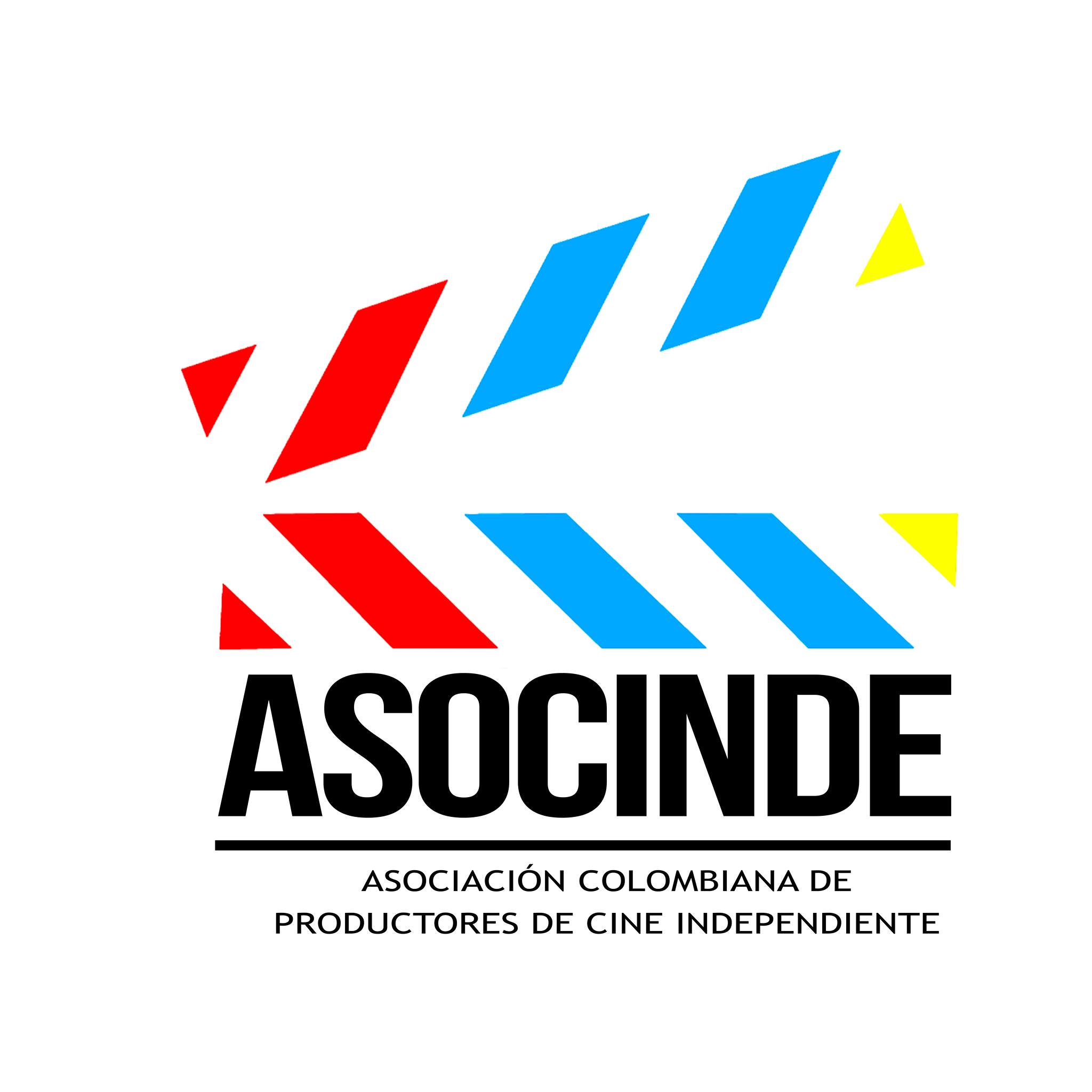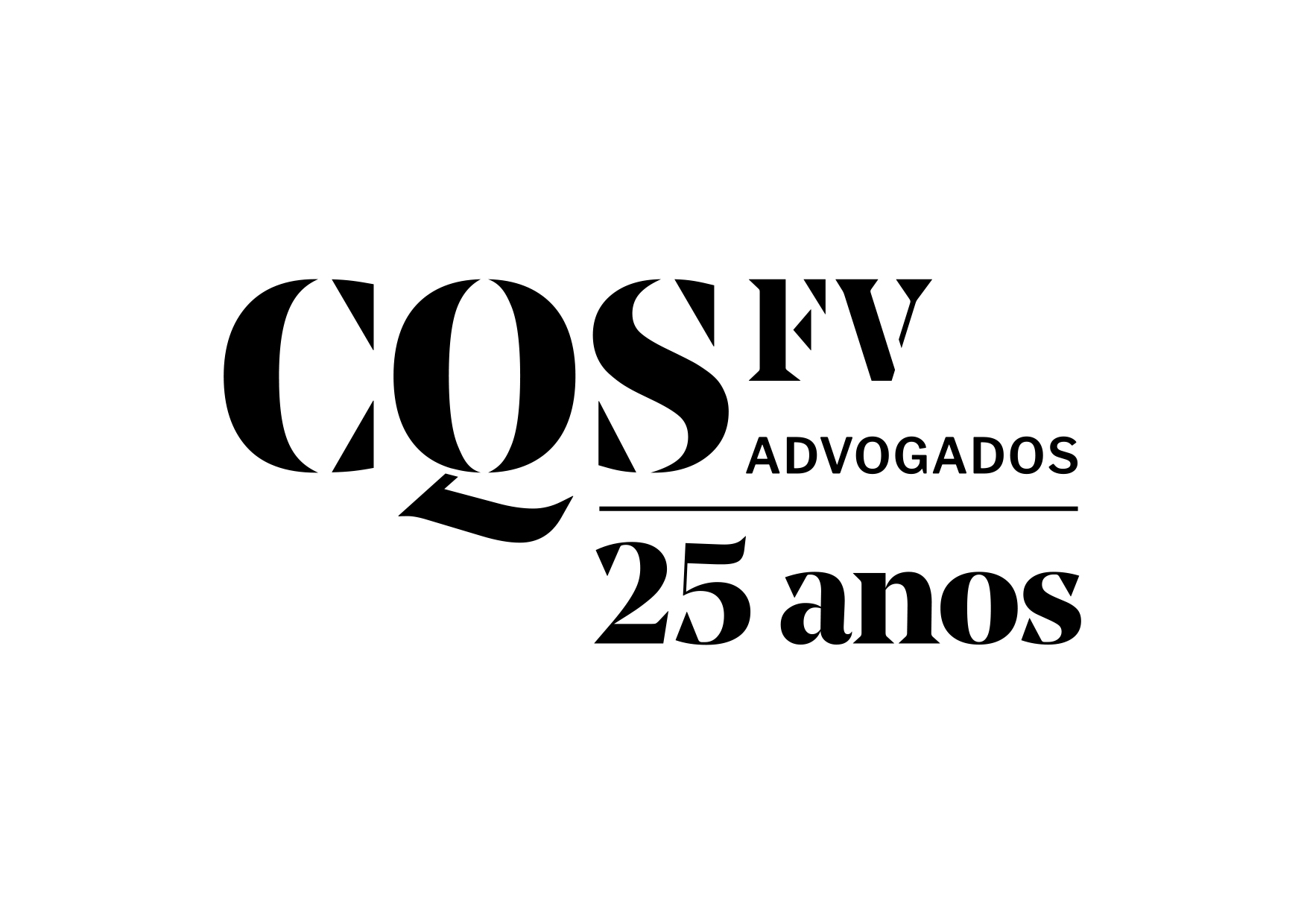In his new article, published in Spanish on January 31st in the “Audiovisual451” and in Portuguese on February 1st in the “Revista de Cinema,” Steve Solot, LATC President, and Associate for Latin America, Olsberg•SPI, states that production incentives can compensate the reduction of public funding of audiovisual content, as illustrated in the new study by the European Audiovisual Observatory.
The English version of the article is below.
Production incentives can compensate the reduction of public funding of films: Learnings from Europe! *
According to the new report by the European Audiovisual Observatory, “Fiction film financing in Europe: Overview and trends 2016-2020,” the share of production incentives of total film financing increased significantly, from 9.6% in 2016 to 17.8% in 2020. This increase is attributed primarily to the growing role of production incentives in medium and large markets. Films of all budget sizes benefitted from increased funding through production incentives.
In contrast, the share of direct public funding for European fiction feature films decreased, accounting for 24% of the total financing volume, compared to 29.4% in the same period.
The growth in the importance of production incentives as a financing source of European films outweighed the decrease in the share of direct public funding. As a result, the share of total public support, i.e. the cumulative share of direct public funding and production incentives, slightly increased from 39.0% to 41.8%.

Is this a new global trend? And if so, what are the implications for Iberoamerican countries?
Although comparable data is not yet available for Iberoamerican countries, several conclusions of the study are relevant for policy makers:
• Total public support (direct public funding + production incentives) is vital for the financing of films.
• Direct public funding remains the most important financing source, despite registering the strongest decrease.
• Production incentives are rapidly becoming a major resource in film financing. They experienced the highest growth among financing sources.
• Contrary to direct public funding, the share of production incentives is generally positively correlated with budget and market size, with the highest figures linked to high-budget films and large markets.
• More than two-thirds of films produced in large markets are partly financed by production incentives.
• Shares of production incentives out of total financing volume almost doubled in large markets in the period studied.
In Iberoamerica there is no direct correlation between direct public funding and production incentives. Both vary significantly on a country-by country basis.
According to the latest Global Production Index published by Olsberg SPI, which includes updated information on more than 100 incentives around the world, in Latin America 7 incentive systems at the national level are active (excluding municipal level incentives), and incentive mechanisms are also in force in Spain and Portugal.
Both significant direct public funding mechanisms, as well as robust production incentives, are in place in Spain, Portugal, and Colombia; however, the largest markets in Latin America, Argentina, Brazil and Mexico still lack production incentives, although they offer different public funding systems:
• Brazil offers a wide spectrum of direct and indirect public funding through its Sectoral Audiovisual Fund (FSA), the Audiovisual, Rouanet, and Paulo Gustavo and Pay-TV laws.
• Mexico offers limited funding through the FOCINE and EFICINE-Production, following the elimination of FOPROCINE and FIDICINE funding mechanisms.
• In Argentina public funding through the INCAA may now be in jeopardy as part of the new government administration objective to restrict public funding.
What may Latin American policymakers learn from the new European Audiovisual Observatory Report?
The legislation and funding sources for audiovisual content production are constantly evolving and subject to changing political and economic factors. However, there is an important message for policymakers in Latin America from the trend in European countries, revealed in the new study – Production incentives are rapidly becoming a major resource in film financing.
Thus, they may consider implementing and/or increasing meaningful production incentives in order to compensate for fluctuations in direct public funding sources. This learning is very valuable given the reliance of many international producers on production incentives when determining where to locate their productions, as well as the positive impact of audiovisual productions on job creation and economic activity, which is highly beneficial for every country.
*Steve Solot
Associate for América Latina
Olsberg SPI (London)
President, Latin American Training Center – LATC












